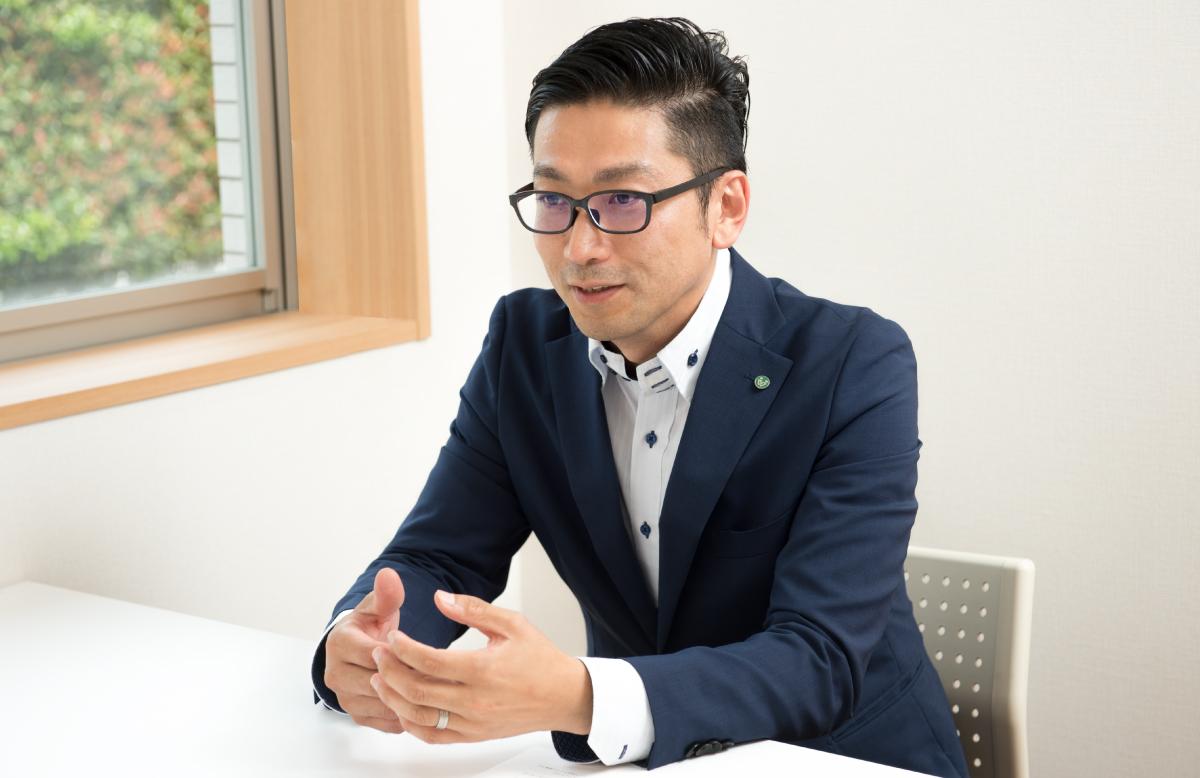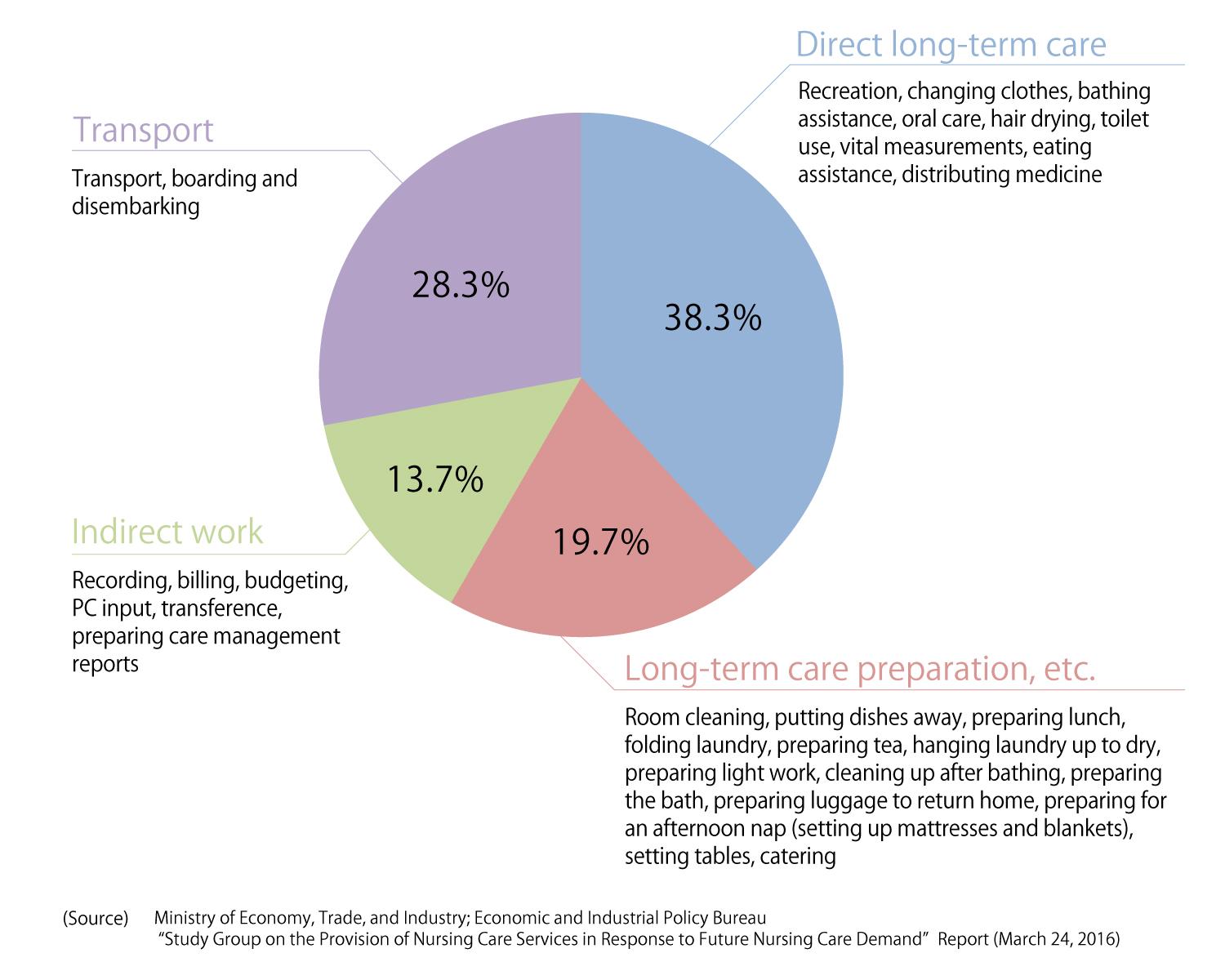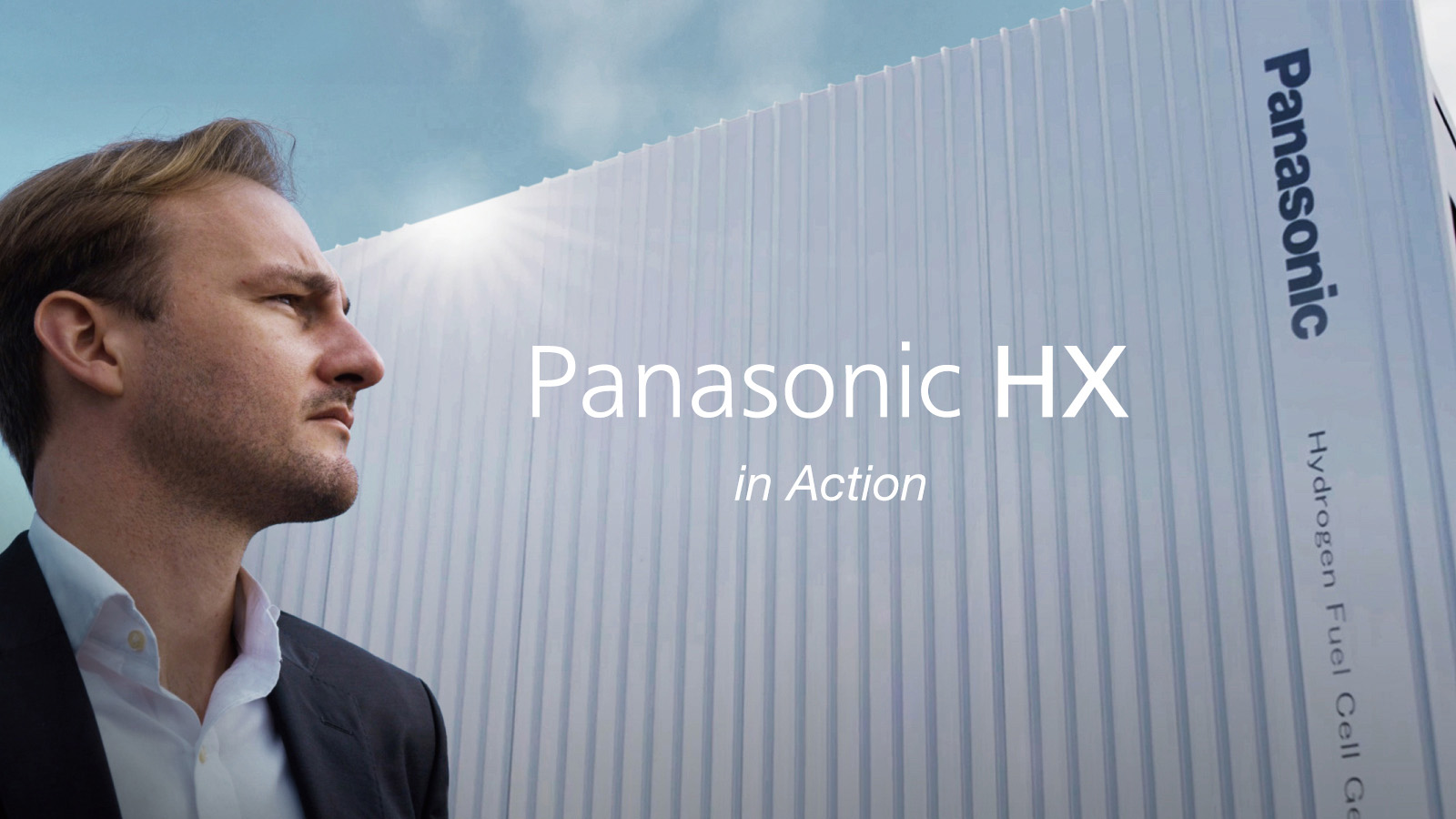
The long-term care industry has a chronic shortage of workers. Staff members strive to improve work efficiency on a daily basis, but there is, of course, a limit. Here, we are taking a look at a system that assists the work involved in transporting users to and from long-term care facilities. We will see how much AI and other aspects of IT have been able to relieve this burden.
A summary of this article:
- In Japan's day care services, which suffer from a lack of workers, transport operations represent a major burden.
- Panasonic uses AI cloud services to automate the production of efficient transport plans.
- At the worksites of TSUKUI CORPORATION, which has completed verification testing, considerable efficiency and a revolution in working methods have been achieved.
The Burden of "Transport," Which Accounts for About 30% of the Work
In recent years, steady efforts have been taken to reduce the growing cost of social welfare in Japan. Against this backdrop, the Japanese government has shifted its thinking to "assisting independence." Toward this effort there is an increasing importance placed on the role of "day care service." However, realistically, Japan's long-term care industry is suffering from a lack of workers. In spite of the fact that the ratio of job offers to job seekers in the field of long-term care was at a high level of 3.02 times in 2016 (Source: Ministry of Health, Labour, and Welfare, "Report on Employment Service"), sufficient labor cannot be secured. As a result, work must be distributed among the existing staff.
There is also a concern that is particular to the field of day care service, which is the fact that many of the work hours are spent transporting users to and from the facilities. According to a survey by the Ministry of Economy, Trade, and Industry, approximately 30% of the work each day for day care services in Japan is spent in transporting users back and forth.
Approximately 30% of the work each day for day care services is spent in transporting users back and forth.
One of the main elements in dividing this time is the need to compile a transport plan. The basic data concerning who uses the transport each day exists, but there are many "people-related" factors to be considered, such as the efficiency of the route, friendships among fellow users, the need for a wheelchair, etc.
This work is like solving a difficult puzzle over and over again, but many facilities have created these routes by hand. And in many cases, only veteran staff members have found optimal solutions and grasped the overall facility and user attributes. It takes time to build the puzzle and, from the perspective of the work environment, it is best to solve it as quickly as possible. With this in mind, TSUKUI CORPORATION, one of Japan's major day care service enterprises, and Panasonic set out to jointly develop a "Transport Assistance Service" for long-term care facilities. Verification tests of this service began on January 1, 2018.
A Long Desired System That Automates the Time-consuming Work of Transport Planning
It was based on DRIVEBOSS, a vehicle control system linked to a car navigation system developed and marketed by Panasonic Automotive Electronics Co., Ltd. The system was further improved and completed to function exclusively as a transport assistance service for long-term care facilities while drawing on various on-site issues.
Mr. Wato Soyama, Manager of the New Buisiness Development Division of the TSUKUI CORPORATION Corporate Strategy Head Office, who served as a bridge between TSUKUI CORPORATION and Panasonic, explained the motivation for introducing the system.
"No matter how you look at it, transport planning is a time-consuming job. Naturally, this planning includes the location of each customer's home and their health condition. For example, certain staff members need to be working during the time that a customer is scheduled for a bath. The operation of the entire enterprise must be considered. A variety of limitations need to be satisfied to select the most efficient route. This kind of planning takes time.
"It was difficult to believe that this could be built into an AI or IT system. On the other hand, we understood how extremely helpful it would be to our management if this system could be improved. Backed by this idea, we began our joint development work." (Mr. Soyama)

Wato Soyama, Manager, New Buisiness Development Division, Corporate Strategy Head Office, TSUKUI CORPORATION.
In Tokyo, operations centered on an office called TSUKUI Setagaya-kamisoshigaya day service center. Actual verification began in January 2018, but the project itself started in spring 2017. Detailed restriction data was uploaded to the AI on the cloud, and patterns and combinations were taught. R&D staff from Osaka's Panasonic Head Office traveled back and forth countless times to separate necessary from unnecessary information, build a simple user's interface (UI, operating screen), etc., and conduct elaborate preparations. Looking back at that time, Mr. Soyama recalls how "they duplicated the exact image that I had in mind."
Our repeated discussions allowed us to visualize "what kind of algorithms make people feel comfortable."
"We originally thought that algorithms that delivered the most efficient routes were best, but there were times when things didn't go well even though the efficiency was good. For example, AI would propose a course that would come back with only one return passenger. That was indeed the fastest route according to the calculation, but in reality, a transport plan that wouldn't convince the person in charge was not practical. So we eventually shifted to the idea of also adding human decision-making to the algorithm. We learned a lot from taking this flexible approach. It also gave me a new-found respect for Panasonic." (Mr. Soyama)
Ms. Aya Wakahashi, Center Manager of the TSUKUI Setagaya-kamisoshigaya day service center and the person who has been directly responsible for transport planning up to this point, says "It's extremely helpful. On a day like Sunday when we have only a few users, we can actually plan our transport with the click of a button. This is certainly the system that we wanted."

Aya Wakahashi, Center Manager & Long-Term Care Support Specialist, TSUKUI Setagaya-kamisoshigaya day service center.
Standardizing our work through AI/IT has involved knowledge sharing to a great extent. The know-how that formerly existed only in the mind of a single person is visualized. There are now two people in addition to Ms. Wakahashi who are in charge of transport planning. According to Mr. Soyama's evaluation, "We learned through a company-wide questionnaire that employees at the core of our company were spending a great deal of time in transport planning, which was not inherently a part of their work. The time that was wasted until now could be redirected toward their original work. From that viewpoint, this service itself could be called a concrete measure toward improving the way we work."
Because long-term care is a service that brings people into contact with each other, the industry is strongly allergic to IT. However, as Mr. Soyama predicts, "Future demand for long-term care will continue to increase, and the need to resolve the shortage of workers is an issue that we have to confront. As shown in our case, we will need to convert human-intensive work to IT so that anyone can take charge of it." Even after our official introduction in June 2018, we will continue to make adjustments to keep moving forward.
The Ultimate Praise: "We Can Never Return to Our Previous Method"
The supply of the basic functions of the transport assistance service in Japan began in June 2018. Its precedent, DRIVEBOSS, went on sale as a solution for resolving various mobility issues in September 2017. It was originally developed centering on safe driving and work efficiency assistance for vehicles used by ordinary companies, but the present project had its start from the concept of "whether more car navigation features could be utilized to create new value."
Mr. Shigeru Kumagai, Solution Business Management Department, Panasonic Automotive Electronics Co., Ltd., described it as follows.
"In spite of the fact that the long-term care industry is a vital industry for the future of Japan, it suffers from an extreme shortage of workers. Against this background, the various divisions of the Panasonic Group and the technical development departments in charge of AI visualized the transport assistance service as a result of repeated inter-disciplinary meetings.

Shigeru Kumagai, Solution Business Management Department, Panasonic Automotive Electronics Co., Ltd.
"We then wrote up a solution based on the idea that 'something like this could solve our problems,' and presented it to Panasonic AGE-FREE Co., Ltd. (the Long-Term Care Operation of the Panasonic Group), where it was enthusiastically approved. The speed with which we were able to gather the knowledge of the Group represents a strength that only Panasonic possesses." (Mr. Kumagai)
The most difficult part of building a system with TSUKUI CORPORATION was the assembly of a transport plan that "felt good." Mr. Soyama of TSUKUI CORPORATION also pointed out the same thing. In other words, a policy of simply creating the highest efficiency of AI would not be successful.
"The main feature of a transport assistance service is the ability to consider a large number of restrictions and create a transport plan for the entire vehicle with easy operation while building on the transport record linked to a car navigation system. The created transport plan is transferred to and displayed on the car navigation system as a visiting list, and the visiting route is proposed. There is no need for the driver to set the visiting locations in the car navigation system. By assisting efficient transport for drivers who are unfamiliar with the roads, this contributes to securing drivers and reducing the transport workload. The restriction data for the users is also set up precisely for each user, so the plan production is finally very much simplified by adding the necessary conditions." (Mr. Kumagai)
For example, on the setting screen for restriction data, the setting items are finely categorized: "uses a wheelchair," "designates non-smoking passengers," "wishes to designate fellow passengers," "facility reception time zone," etc. And after the settings are automatically allocated, the plan creating screen and seating designation screen can be checked at a glance, and the transport plan can be displayed as a visiting list on the car navigation screen. It is designed to prevent incorrect recognitions at every stage.
Similar to familiar PC software, operation is easy without even looking at the operating instructions.
"Customers who have completed trial operation say the following: 'Operation is so easy, you can make stress-free plans,' 'The act of making the plans itself is enjoyable, 'I could never go back to the previous method,' reflecting their positive attitude. The response at the exhibition this spring were reported by the media, with excellent reactions from businesses all over Japan, from Aomori in the north to Kagoshima in the south. Customers called for the earliest possible official introduction, leading us to believe that many businesses have similar issues." (Mr. Kumagai)
As for Panasonic Automotive Electronics Co., Ltd., we want to contribute to the long-term care industry by providing this service to as many facilities as possible while "providing mobility means to people lacking transportation" mainly among the elderly. The transport assistance service was the first step, but it also became a valuable example of how AI/IT can effectively improve the working environment by developing the wide open field of the long-term care industry and providing unprecedented convenience and efficiency. If we continue to advance from here, we may see "a mobility means for people lacking transportation" taking root worldwide over the next 5 to 10 years that we can't even imagine today.
- Reproduced from the website "Mirai-kotohajime", by courtesy of Nikkei Business Publications, Inc.
# # #
- Disclaimer:
- We would like to note that Panasonic Newsroom is not a place to address personal Customer Service issues. Even though this is not the forum, Panasonic is always eager to resolve your concerns. Our local customer services contacts can be found at Global Support or you can see our list of Social Media Accounts to find the right channel for your queries and concerns.












